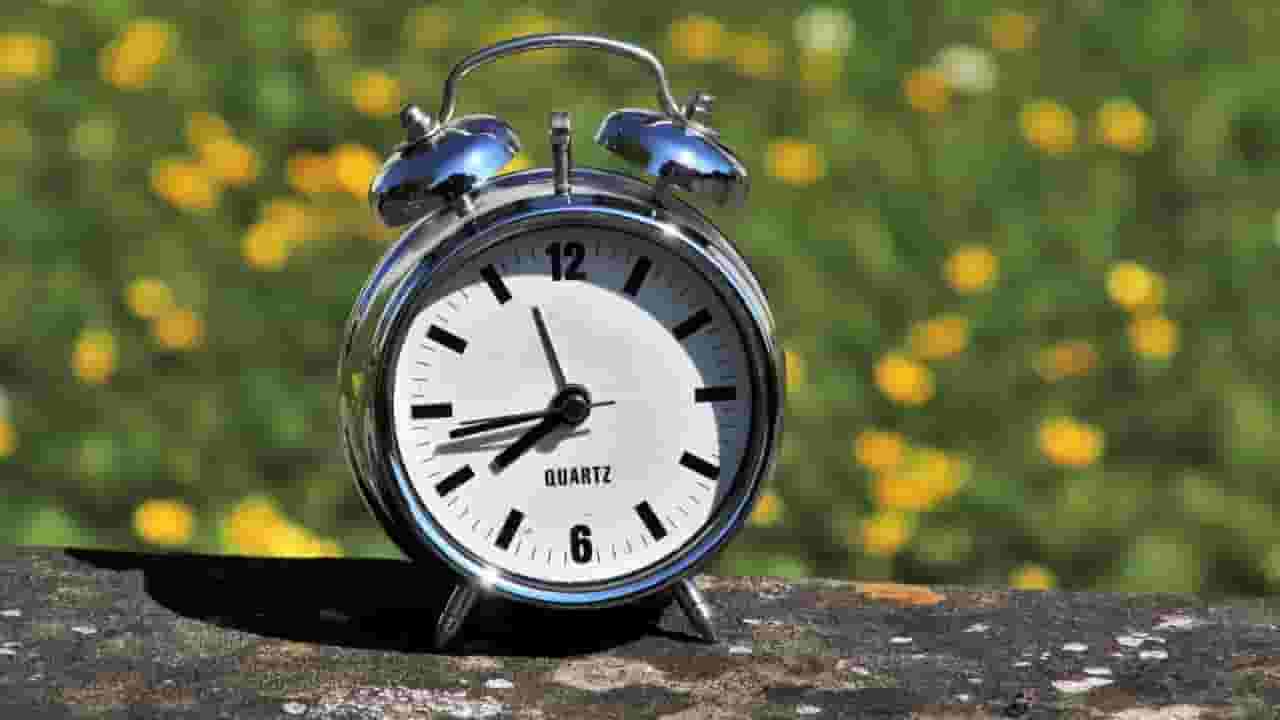Daylight Saving Time: Amazing History, Purpose, and Controversies
Daylight Saving Time: Amazing History, Purpose, and Controversies
Daylight Saving Time:
Daylight Saving
Daylight Saving Time (DST) is the practice of setting the clock ahead by one hour during the summer months in order to extend the amount of daylight in the evening. This means that for a period of time, the sun appears to rise and set one hour later than it normally would. The idea behind DST is to save energy by reducing the need for artificial lighting in the evenings.
DST is not observed by all countries, and even within countries that do observe DST, not all regions may participate. In the United States, for example, Hawaii and most of Arizona do not observe DST. The starting and ending dates for DST may also vary from country to country or even within a country.
DST has been a controversial issue since it was first introduced. Supporters argue that it saves energy and can boost economic activity by giving people more time to enjoy outdoor activities in the evening. However, opponents argue that it disrupts people’s sleep patterns and can have negative effects on health, particularly in the weeks following the time change.
Daylight Saving Time
Daylight Saving Time (DST) is a seasonal time change practice used in many countries around the world. It involves adjusting the clock forward by one hour during the summer months, and then adjusting it back by one hour in the winter months. This means that during DST, there is more daylight in the evening and less in the morning.
The idea behind DST is to make better use of the available daylight and to save energy by reducing the amount of artificial lighting required in the evenings. However, the benefits of DST have been debated over the years, with some studies suggesting that the energy savings are negligible and may even be offset by increased use of air conditioning.

DST has also been linked to negative health effects, particularly in the days following the time change. These effects can include disrupted sleep patterns, increased risk of heart attacks and strokes, and an increased risk of traffic accidents.
Not all countries observe DST, and even within countries that do, the specific dates and times of the time change may vary. Some regions within a country may also choose not to participate in DST. In the United States, for example, Hawaii and most of Arizona do not observe DST.
Daylight Saving Time Controversies
Daylight Saving Time
Daylight Saving Time: History, Purpose, and Controversies
Daylight Saving Time (DST) is a seasonal practice of advancing the clock by one hour during the summer months to extend daylight hours in the evening. This practice is widely used in many countries around the world, although it is not universally adopted. In this article, we will explore the history, purpose, and controversies surrounding DST.
History of Daylight Saving Time
The idea of DST was first proposed by Benjamin Franklin in 1784 as a way to save candles. However, it was not until 1907 that William Willett, a British builder, advocated for DST as a way to enjoy more daylight in the evening and reduce energy consumption. After years of campaigning, DST was finally adopted by several European countries during World War I as a way to conserve fuel for the war effort.
In the United States, DST was first implemented in 1918, but it was not until the 1960s that it became widely adopted. In 2007, the United States extended DST by four weeks, starting on the second Sunday in March and ending on the first Sunday in November.
Purpose of Daylight Saving Time
The primary purpose of DST is to save energy by reducing the amount of electricity needed for lighting and heating. By extending daylight hours in the evening, people can rely less on artificial lighting and heat, which can reduce electricity consumption. Additionally, DST is believed to reduce traffic accidents, crime rates, and health problems associated with lack of sleep.
Controversies Surrounding Daylight Saving Time
Despite its potential benefits, DST remains a controversial practice. One of the main criticisms is that it disrupts people’s sleep patterns and circadian rhythms, leading to negative health effects such as increased risk of heart attacks, strokes, and traffic accidents. Critics also argue that DST can be confusing and disruptive for businesses, transportation systems, and international communication.

Another controversy surrounding DST is that its benefits are unclear. While some studies suggest that DST can reduce energy consumption and traffic accidents, others show little to no effect. Additionally, some research suggests that DST may actually increase energy consumption in certain regions and that its effects on crime rates and health outcomes are inconclusive.
Daylight Saving Time: Effects on Different Sectors
In addition to the controversies surrounding DST, there are also debates about its effects on different sectors of society. Here are some of the effects of DST on different areas:
Energy consumption – One of the main arguments for DST is that it reduces energy consumption. However, the extent to which it actually saves energy is a matter of debate. Some studies suggest that DST reduces energy consumption, while others show little or no effect. The impact of DST on energy consumption also varies depending on the region and climate.
Agriculture – The effects of DST on agriculture are mixed. While some farmers support DST because it gives them more daylight hours to work in the field, others oppose it because it disrupts their animals’ feeding schedules and causes logistical problems with transportation and shipping.
Health – The impact of DST on health is also controversial. While some studies suggest that DST can lead to sleep disruption and negative health outcomes such as heart attacks and strokes, other studies show little or no effect. The impact of DST on mental health is also a matter of debate.
Economy – The impact of DST on the economy is complex. While some businesses support DST because it gives them more daylight hours to operate and can boost sales, others oppose it because it can cause confusion and logistical problems with scheduling and communication. The impact of DST on tourism and travel is also a matter of debate.
Society – The impact of DST on society is also controversial. While some people enjoy the longer daylight hours and the opportunity to engage in outdoor activities, others oppose DST because it disrupts their sleep patterns and causes confusion in their daily lives.
Daylight Saving Time: Alternatives and Future Outlook
As the controversies and debates surrounding Daylight Saving Time continue, some have proposed alternatives to the current practice. Here are some of the alternatives:
Year-round standard time – Instead of switching between standard time and DST, some propose adopting standard time all year round. This would eliminate the need for twice-yearly clock changes and avoid the sleep disruption that many people experience during DST.
Permanent Daylight Saving Time – Some propose adopting permanent DST, which would keep the clocks one hour ahead all year round. This would provide longer daylight hours in the evening year-round, but would also mean darker mornings, which could have negative effects on sleep patterns and school schedules.
No time changes at all – Some argue that the best solution is to eliminate time changes altogether and stick to a consistent time throughout the year. This would eliminate the confusion and disruptions caused by DST and standard time changes.
While these alternatives have their own benefits and drawbacks, they are all being considered as potential solutions to the issues surrounding DST.
In terms of the future outlook, the use of Daylight Saving Time is likely to continue to be a topic of discussion and debate. As more research is conducted on its effects and alternatives, governments and organizations may re-evaluate the use of DST and consider adopting new policies. The impact of technology on timekeeping may also play a role in the future of DST, as some argue that digital clocks and devices have made the need for DST obsolete.
Daylight Saving Time: Cultural and Historical Context

Daylight Saving Time is a practice that has been adopted by many countries around the world, but its origins and cultural context vary by region. Here are some of the cultural and historical aspects of DST:
Origins – The idea of changing clocks to save daylight was first proposed by Benjamin Franklin in 1784, but it wasn’t until World War I that DST was adopted on a large scale. Germany was the first country to adopt DST, followed by other European countries and the United States.
Adoption – Today, Daylight Saving Time is used in over 70 countries around the world, but its adoption varies by region. Some countries, such as the United States and Canada, adopt DST in most regions, while others, such as China and Japan, do not use DST at all.
Religious Observance – In some regions, DST is affected by religious observance. For example, in Israel, DST is observed during the summer but not during the Jewish High Holy Days, which take place in the fall.
Agricultural Considerations – The impact of DST on agriculture varies by region. In some areas, such as the United States, DST is observed during the summer months to allow farmers more daylight hours to work in the field. In other areas, such as parts of Australia, DST is not observed at all due to its impact on livestock schedules.
Historical Significance – DST has historical significance in some regions. In Europe, DST is sometimes referred to as “Summer Time” and is associated with the tourism industry and leisure activities. In the United States, DST has been associated with the war effort and conservation of resources during times of crisis.
Daylight Saving Time Means
Daylight Saving Time (DST) is a seasonal time change practice where the clock is adjusted forward by one hour during the summer months, and then adjusted back by one hour in the winter months. This means that during DST, there is more daylight in the evening and less in the morning.
The primary goal of DST is to make better use of the available daylight and to save energy by reducing the amount of artificial lighting required in the evenings. By extending the amount of daylight in the evening, people may be less likely to use electric lights, reducing overall energy consumption.
DST is used in many countries around the world, but not all countries participate, and some countries only observe DST in certain regions. The specific dates and times of the time change may also vary from country to country or within a country.
While DST has been implemented with the intention of saving energy, its effectiveness is debated. Some studies suggest that the energy savings are negligible, and there may be negative effects on health, such as disrupted sleep patterns and an increased risk of traffic accidents in the days following the time change.
Overall, the decision to observe DST is a matter of policy and varies from country to country. Some regions may also choose not to participate in DST.
Daylight Saving Time Chang
Daylight Saving Time (DST) is typically observed by moving the clock ahead by one hour in the spring, usually on the second Sunday in March in the United States, and then moving the clock back by one hour in the fall, usually on the first Sunday in November. This means that people “lose” an hour of sleep in the spring when the clock moves forward, and “gain” an hour of sleep in the fall when the clock moves back.
The specific dates and times of the time change may vary from country to country or within a country, and not all countries observe DST. Some regions may also choose not to participate in DST.
The implementation of DST is typically governed by laws or regulations at the national or regional level. In the United States, for example, the Uniform Time Act of 1966 established the current system of DST, although individual states may exempt themselves from observing DST. Some countries may also change the start and end dates of DST to suit their needs or based on economic or environmental factors.
While the primary goal of DST is to save energy, its effectiveness is debated, and there may be negative effects on health, such as disrupted sleep patterns and an increased risk of traffic accidents in the days following the time change.
Daylight Saving Time USA
Daylight Saving Time (DST) in the United States is observed from the second Sunday in March to the first Sunday in November. During this period, clocks are set forward by one hour, so that there is more daylight in the evening and less in the morning.
The specific dates and times of the time change are set by federal law and apply to all states except for Hawaii and most of Arizona, which do not observe DST. However, some U.S. territories, such as Puerto Rico and the Virgin Islands, do observe DST.
The implementation of DST in the United States is governed by the Uniform Time Act of 1966, which was amended in 1986 to begin DST on the first Sunday in April and end it on the last Sunday in October. The current dates of the second Sunday in March and the first Sunday in November were established by the Energy Policy Act of 2005.
While the primary goal of DST is to save energy, its effectiveness is debated, and there may be negative effects on health, such as disrupted sleep patterns
Daylight Saving Canada
Daylight Saving Time (DST) in Canada is observed from the second Sunday in March to the first Sunday in November, in accordance with federal law. During this period, clocks are set forward by one hour, so that there is more daylight in the evening and less in the morning.
The provinces and territories of Canada that observe DST include British Columbia, Alberta, Saskatchewan, Manitoba, Ontario, Quebec, New Brunswick, Nova Scotia, Prince Edward Island, and Newfoundland and Labrador. The Northwest Territories and Yukon Territory also observe DST.
Not all provinces and territories in Canada have always observed DST, and some have changed their observance over time. For example, Newfoundland and Labrador was the first province to adopt DST in Canada in 1918, while Saskatchewan did not adopt DST until 1966. Additionally, some areas within provinces may choose not to observe DST.
The implementation of DST in Canada is governed by federal law, although the specific dates and times of the time change may be adjusted based on economic or environmental factors. While the primary goal of DST is to save energy, its effectiveness is debated, and there may be negative effects on health, such as disrupted sleep patterns and an increased risk of traffic accidents in the days following the time change.
Daylight Saving Time India
Daylight Saving Time (DST) is not observed in India. The country follows Indian Standard Time (IST) throughout the year, which is five and a half hours ahead of Coordinated Universal Time (UTC+5:30).
India used to observe DST briefly during World War II, but the practice was discontinued after the war ended. In recent years, there have been some proposals to introduce DST in India, but they have not been implemented due to concerns about its effectiveness and potential impact on the economy and public health.
Instead, India has adopted other measures to conserve energy, such as the use of energy-efficient lighting and appliances, the promotion of renewable energy sources, and the enforcement of building codes that encourage energy efficiency.
It’s worth noting that some regions in India, such as the Andaman and Nicobar Islands, have their own local time zones, which may differ from IST by a few minutes or even an hour. However, these time zones are not related to DST and are used for administrative purposes only.




